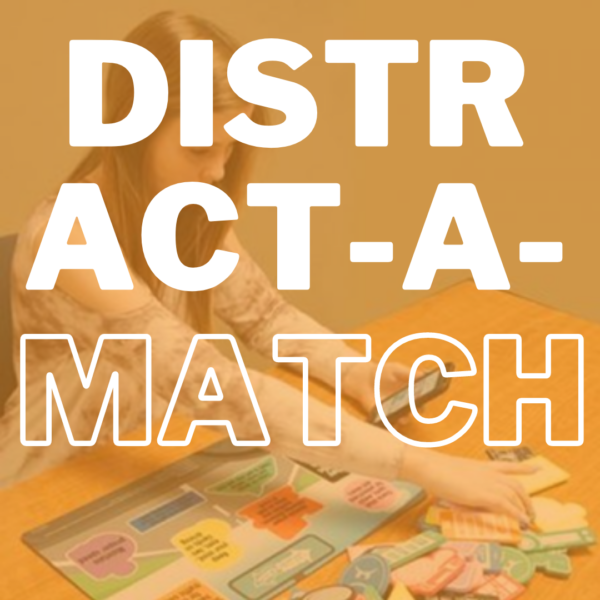- Before your outreach, review the provided User Guide and decide which challenges you want to offer, and make sure you have any props you might need on hand for them.
- Familiarize yourself with the digital timer and how it works. Set it to beep at 30 seconds.
- Each peer will play twice – once without and once with a distraction. Each challenge is timed for 30 seconds.
- Explain that they will be matching the shapes to the shapes on the mat; they can only place one shape per location and use each color only once. For example, if they place the black coffee cup shape on the mat, they can’t use any other black pieces for matching the other shapes.
- After completing the first attempt without distractions, make note of how many shapes they matched. You might ask them if they think this task was easy or if they think they will do just as well if they are doing another task such as typing a text message, reading, answering questions, etc.
- During their second attempt, introduce whatever distraction you are using and keep track of how many shapes they can match while distracted.
- Once done, compare the two attempts and talk about the affect the distraction had on their performance.
- The goal of this activity is to educate your peers about the risks of distracted driving. Here are a few questions you might ask to get players thinking about how distractions affect driving:
- Did you perform as you expected? Was there anything that surprised you?
- How might the different types of distractions – visual, manual, cognitive – contribute to increased driving risk?
- What are some driving strategies to reduce risks? (Check out the mat – it lists some for you)
- Discuss the distraction represented by each shape and identify what type of distraction it is.
- Angry Face represents thinking of a situation or events that cause intense emotions.
This is a cognitive distraction.
- Talking represents talking while driving.
This is a visual and cognitive distraction
- Eating represents eating and drinking while driving.
This is a manual and visual distraction.
- Navigation represents searching for a location, listening to directions, or adjusting the volume
This is a manual, visual, and cognitive distraction.
- Texting represents opening, reading, searching for names, thinking of a response, typing
This is a manual, visual, and cognitive distraction.
- Reading represents opening, holding the pages, reading, thinking, turning the pages
This is a manual, visual, and cognitive distraction.
- Music represents searching for a song, listening, singing, dancing, adjusting the volume
This is a manual, visual, and cognitive distraction.
- Makeup represents opening, applying, looking in the mirror, putting away
This is a manual and visual distraction.
- Have you been a passenger when the driver was driving distracted? Did you speak up?
- As a passenger, what can you do to help the driver avoid distractions?
|
